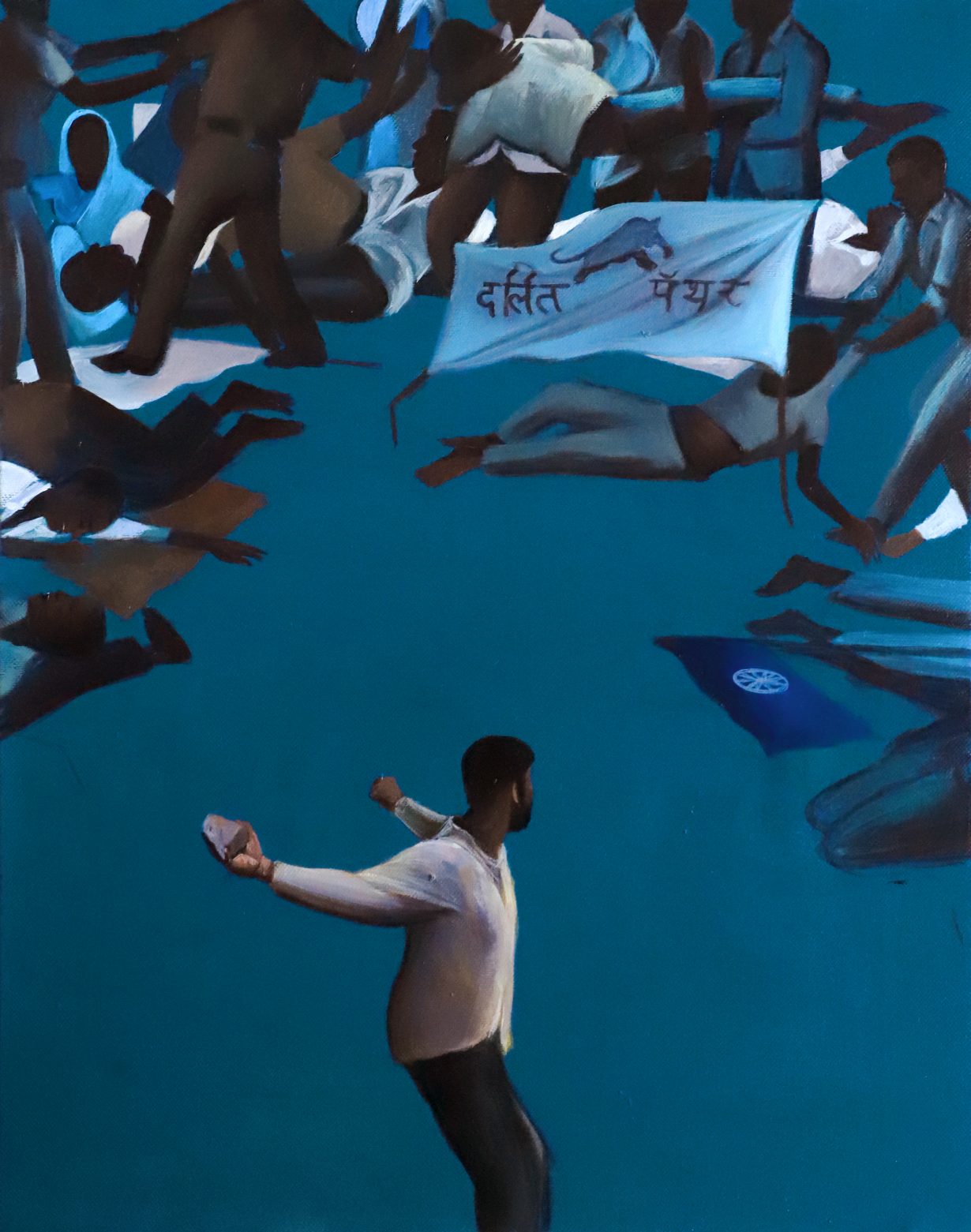The artworld, in its comfortable form, has restricted itself to performing as a courtesan to a select economically or socially privileged few, says Suraj Yengde in the first in a series of essays

The topic of art is something about which I have been aware since I can remember. Art, after all, was our excellence that we demonstrated as Dalits: we had to be creative to get by. We have always created, crafted, rehearsed, performed and developed various genres. Yet the wretchedness of caste could never allow for a talent springing from someone that others declared to be filthy and untouchable. Dalits are the outcastes of Brahminical Hindu caste society, kept at the bottom socially, economically and religiously, through an all-out assault on the mind and creativity of a people others consider to be less than human.
Nevertheless I have witnessed art in the form of finished works. My father, Milind Yengde, even enrolled me in a painting class. On which I promptly bailed. I knew it to be a celebrated but poorly paid profession. But I was fascinated with art. My maternal uncle, Raju Suryatal, a cop, was also an extraordinary portraitist. He would draw Bollywood actors. Addicted to the taste of tobacco, he would put in a mouthful and sit with his pencil and white paper as soon as he came home. And I kept wondering why he would choose a profession so divorced from his art practice.
There are many Rajus in the world: those whose natural artistic talent and unresolved curiosity can synchronise in their mind and hands to produce meaning; but who never give everything else up to do it. Yet their performances, inquiries, dogmas and cryptic messages lie pregnant in whatever artworks they do leave behind. For those of you who have grown accustomed to art being the preserve of the glamorous and the chic, and an alternative world of tax avoidance, this should serve to remind you that simply to have a free spirit is to practise a form of art. It is a fleeting emotion that marks its space in the memory of the mind.
So what is art for in a social context? Art’s staging of tense coded dramas is an invitation to the audience to contemplate and theorise their own experience of reality. We all know that experiences are subjective and that, individually, they might deflect from any generally perceived or agreed reality, but generally we conform. The artist exists to be unafraid to discard that orthodoxy; to advocate for a point of view that stands away from the flock.
And yet the artworld, in its comfortable form, has restricted itself to performing as a courtesan to a select economically or socially privileged few. Art exists to create a connoisseur class; the larger audience, the general public, is thought to be incapable of comprehending the apparently nonsensical dilemmas presented to them. And the international artworld, as it is constituted at present, doesn’t care. Or have to care.
It’s obvious how this might chime with those belonging to an outcaste class.
Over the past 200 years, Dalit artists, who are located in the rawness of everyday reality, have not found it necessary to seek out intentional obfuscation. They create, craft, rehearse and perform to liberate their kind. Their energy gets everyone on their feet. The songs of Vaman Kardak (1922–2004), performed in the vernacular, brought knowledge of the Dalit community to rural Indians. Savi Savarkar’s (1962–) portraits of the hierarchy of castes made the maddening Manu – the historic creator, with a little help from generations of commentators, of the laws of castes (sometime between the first and third centuries CE) – a recognisable feature of Indian artwork. Raja Dhale (1940–2019; founder of the Dalit Panthers) was a trained artist who brought the sensitivity of his calligraphy and paintings to his speeches and actions. Art is the medium of universalist sensitivities in the path of Dalit liberation.
The new generation of Dalit artists, like Prabhakar Kamble, Vikrant Bhise, Valay Shende, Sanjeev Sonpimpare, Tejswini Narayan Sonawane, Sajan Mani, Bhimrao Panchale and Arivu, among others (who we shall meet in future columns), are building on this. Skipping the dogmas that belittle their talent and trade, the Dalit artform is now settling into divulging its own stories. A Dalit as a creator and a subject is a new form now visible in galleries, art festivals and commissioned works.
It’s important to say that the Dalit does not exist apart from the world. The Dalit artist is finding a kinship with the outcastes of the wider world, not least via the lineage of colonisation but also through the modern archives that these communities have created. The African artworld radically asserts itself by critiquing the oppression that only saw it perform as a subject to be consumed, rather than as an original creator. The Dalit community has always been looked down upon, even in India, for reasons of hereditary extended oppression. The Dalit looks for black resemblance and sees the space of the African artworld as a shared space.
In these columns, we will take a closer look at the Dalit artworld and how it manifests and expresses itself. It is a monumental time for Dalit artists. They are establishing their presence as equals. They have demonstrated their abilities at the Berlin Biennale, Documenta, Dakar Biennale and the African Biennale of Photography, among others, while in India they are curating each other’s works for the first time at the National Gallery of Modern Art, in Mumbai. It is incumbent upon the artworld to take notice of this and theorise this freshness.
Suraj Yengde is a scholar at Harvard and Oxford Universities. He is an author of Caste Matters (2019) and co-editor of The Radical In Ambedkar.